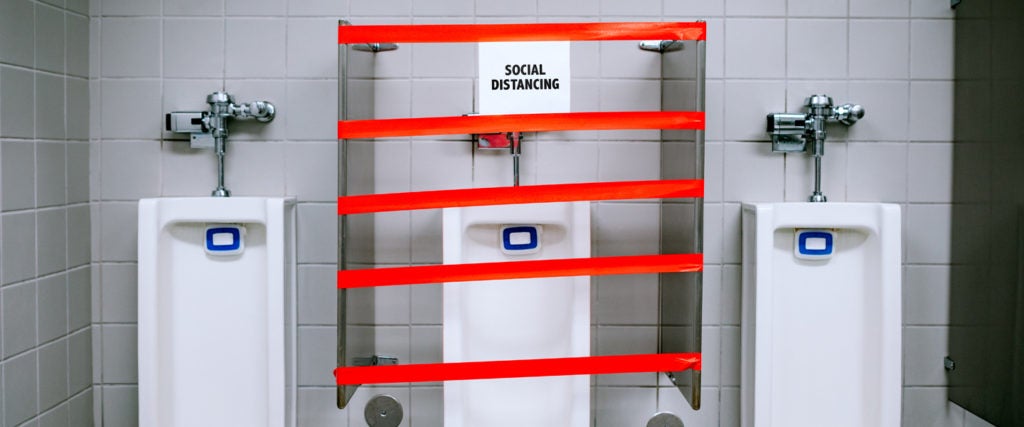It’s been an absolute delight to exclusively use my own bathroom for the last three months. People seem so damn eager to go to bars and restaurants, but aren’t they forgetting that consuming beverages in public usually results in needing to use a public restroom?
Regardless of how much we might continue to isolate ourselves, though, public restrooms are something we should all plan for. Even if you’re only leaving the house to buy groceries, it’s better to prepare yourself for the worst.
Ideally, your public restroom experience won’t necessarily look all that different than it did pre-pandemic. Most people, I hope, already minimize touching anything, keep away from strangers and thoroughly wash their hands afterward. If you weren’t already the type to use a fresh paper towel to open the bathroom door upon departure, now would be a good time to pick up that habit. Basically, the core safety requirements for using a public restroom today are about the same as they were before. But there are extra steps you can (and should) take for added precaution, even if it only benefits your peace of mind.
You would think that the pandemic has brought an end to under-stocked bathrooms, but there’s no guarantee. Keeping hand sanitizer on you is essential in the event that the bathroom is out of soap, or requires you to touch more public surfaces after washing your hands. If you want to be ultra prepared, you can even buy kits containing things like toilet paper, seat covers, hand sanitizer, soap, wipes and gloves. These are usually small enough to keep in a purse or glove compartment. (To that end, it’s definitely not a bad idea for everyone to carry some type of bag to store their essentials in whenever leaving the house.)
Public restrooms are also an obvious place to keep your mask on. In some cases, social distancing might not be entirely possible. But if you have the option, choose a stall or urinal furthest away from another person. Again, I imagine many of you do this already — there’s literally nothing weirder than having someone pull up right next to you in an otherwise empty bathroom.
One possible area of concern, though, is the fact that toilets basically aerate fecal matter, bacteria and, yes, viruses. Again, this isn’t something new: They’ve always done this, and it’s always been gross. But in the context of coronavirus, it’s a little bit more concerning. Considering that COVID-19 can be spread through fecal matter, it seems that there’s some possibility that inhaling these aerated particles (puke… I’m so sorry I even had to write this) could be a potential means of transmission.
Per a study published this week in Physics of Fluids, toilets can generate a nearly three-foot cloud of aerosol droplets containing… whatever was in the bowl. These particles will continue to spread for several minutes. While we don’t entirely know if toilets specifically lead to higher transmission of COVID-19, the spread of infectious fecal particles through a poorly ventilated apartment complex in Hong Kong in 2003 was responsible for SARS.
Until we design entirely different toilets, the only real solution is to close the lid. If the toilet doesn’t have a lid, well, all you can really do is hope for the best. Like I said, we still don’t even know if you can catch COVID-19 from toilets this way. We also don’t entirely know how easily you can catch it from touching public surfaces, either — most evidence seems to suggest that the primary form of transmission is via respiratory droplets directly from an infected person.
The best thing you can do to avoid possible public restroom transmission is just to minimize the amount of time you spend in public. Public restrooms have always been gross and germ-y. So pandemic or not, you probably should just avoid them when you can. But if you’ve gotta go, the usual rules apply: Stay away from others, and wash your hands.

